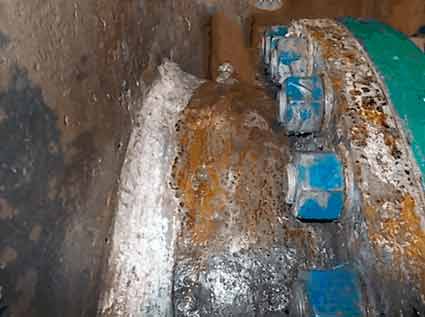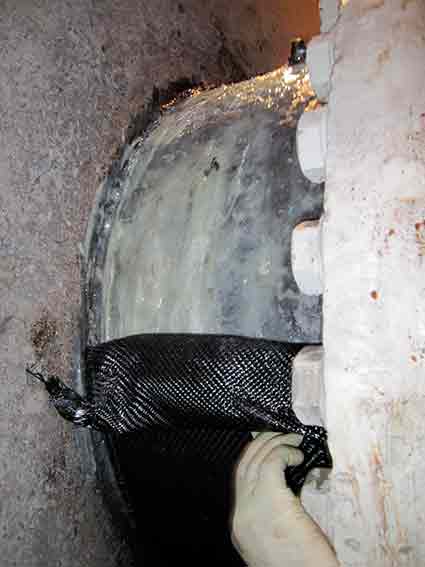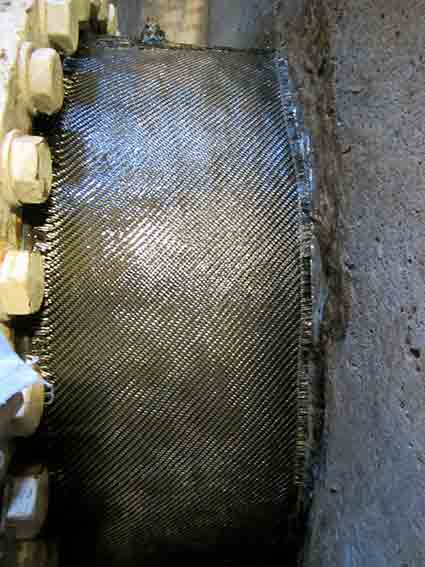†Preserving Potable Water: A Case of Steel Pipe Repair in a Service Reservoir In the United States, water treatment plants play a vital role in ensuring clean and safe drinking water for millions. After processing, the water flows through an intricate network of pipes before being stored in reservoirs. These reservoirs can be above or below ground, depending on the geography, and often include pumping stations that help move water across different elevations. Service reservoirs are crucial for maintaining consistent water pressure and supply. In flat areas, they may look like elevated water towers, while in hilly or mountainous regions, underground service reservoirs are more common. Despite their importance, these structures are not immune to wear and tear, especially when it comes to the steel pipes and tanks inside them. Over time, exposure to moisture leads to corrosion, which can cause leaks and compromise the integrity of the potable water supply. This was exactly the situation at an underground service reservoir in the southwestern U.S., where three outlet pipes began showing signs of pitting and leakage. Approximately 5% of the piping system had been affected by long-term exposure to water and oxygen, with some sections deteriorating to the point of structural weakness. The repair needed to be done quickly, as the reservoir could only be taken offline for a short period. Moreover, the materials used had to meet strict safety standards—specifically, NSF-61 certification—to ensure the water remained safe for consumption. That’s when HJ3’s CarbonSeal Steel Pipe Repair System came into play. HJ3’s system is UL-approved and fully compliant with ANSI/NSF Standard 61, making it ideal for use with potable water. The system was chosen not only for its safety but also for its efficiency. With time being a critical factor, the team needed a solution that could be installed quickly without compromising quality. The repair process started with thorough surface preparation. Using abrasive blasting with NSF-61 approved media, the steel flanges were cleaned and prepped for repair. Next, the damaged sections were patched, primed, wrapped with carbon fiber, and sealed with a chemical-resistant topcoat. The entire operation was completed in just one day, meeting the tight schedule set by the facility. The result was a restored system that met original design strength requirements and ensured continued safe operation. By using HJ3’s CarbonSeal system, the reservoir was back online quickly, minimizing disruption to the local water supply. If you're interested in learning more about HJ3's CarbonSeal system or other NSF-61 compliant solutions, feel free to reach out to us via email or call us at 877-303-0453. †††Iron-based alloy powder is commonly used in plasma transfer arc welding (PTAW) due to its excellent mechanical properties and high resistance to corrosion and heat. This type of powder is typically composed of iron as the base metal, along with various alloying elements such as nickel, chromium, molybdenum, and tungsten. Fe Alloy Powder,Stainless Powder,High Temperature Powder,Iron Base Pta Welding Powder Luoyang Golden Egret Geotools Co., Ltd. , https://www.xtc-thermalspray.com



The specific composition of the iron-based alloy powder may vary depending on the desired properties and application requirements. For example, adding nickel can increase the strength and toughness of the weld, while chromium enhances the corrosion resistance. Molybdenum and tungsten are often added to improve the high-temperature strength and creep resistance of the weld.
Iron-based alloy powders for PTAW are available in various particle sizes, typically ranging from a few micrometers to several hundred micrometers. The powder is usually fed into the plasma arc through a powder feeder, which ensures a controlled and consistent supply of powder during the welding process.
During PTAW, the powder is melted and deposited onto the workpiece, forming a weld bead. The high energy plasma arc provides the heat necessary to melt the powder and the base metal, creating a strong and durable weld joint.
Overall, iron-based alloy powder for plasma transfer arc welding offers excellent weldability, high mechanical properties, and resistance to corrosion and heat, making it suitable for a wide range of applications in industries such as aerospace, automotive, and power generation.
Water Reservoir Outlet Pipes Repaired with Carbon Fiber
